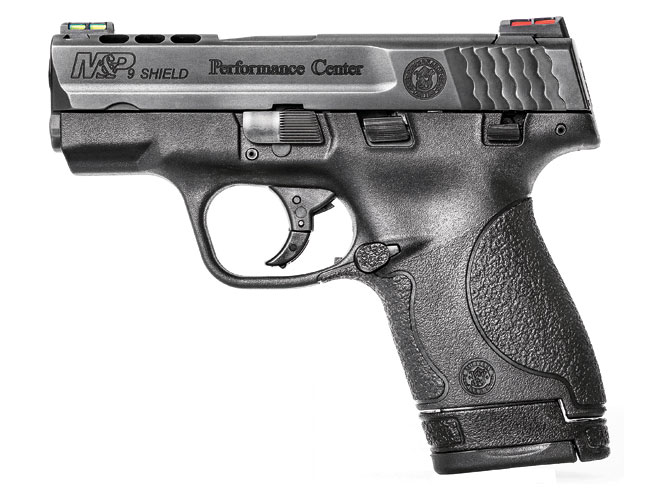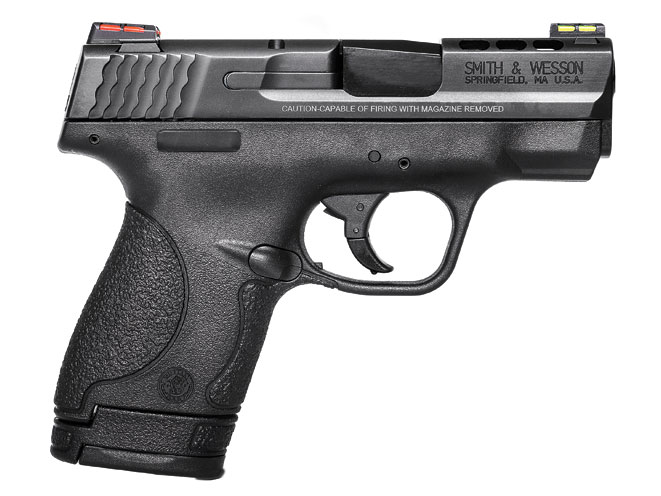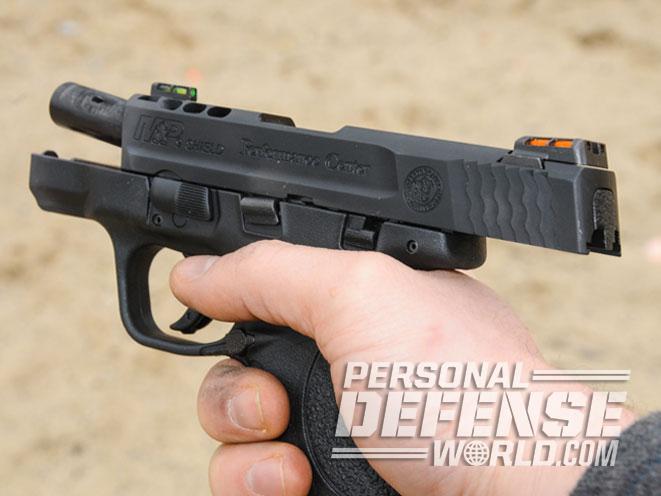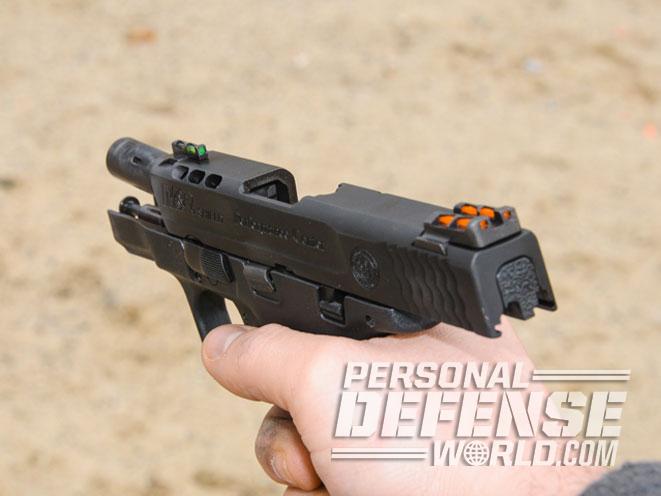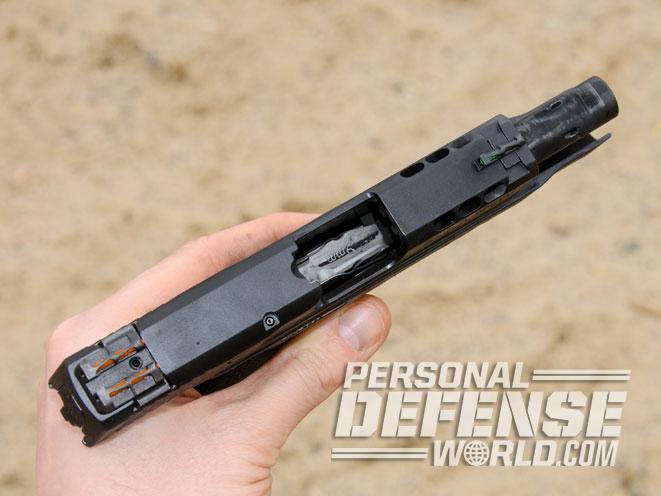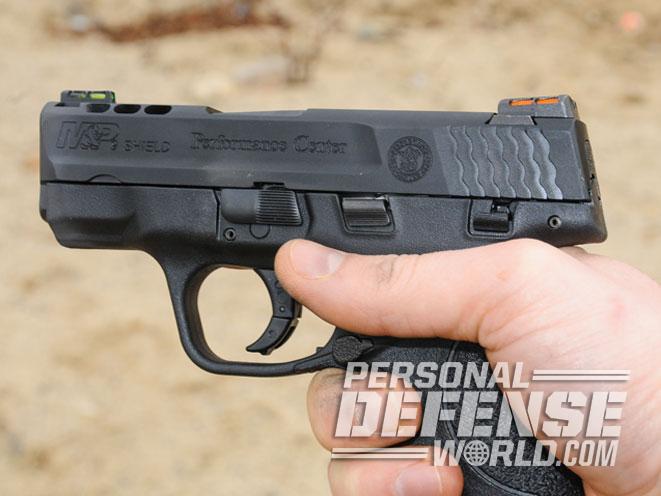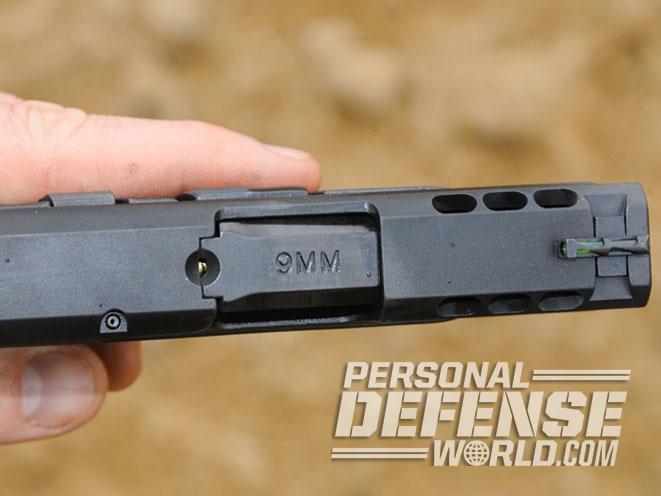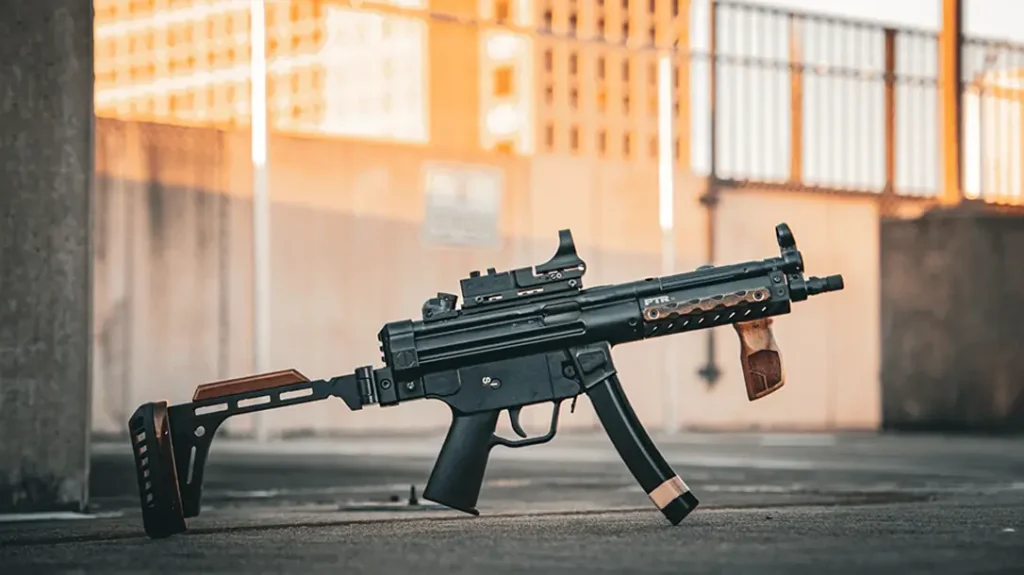The smallest 9mm and .40 S&W handguns in Smith & Wesson’s remarkable Military & Police (M&P) line are its single-stack Shields. They retain the style, function, shape, controls and most of the ergonomics of the larger double-stack handguns in that line, all while slimming down to make them unique.
The biggest differences—all improvements—to this Shield over the standard Shield, are first in porting, then in the trigger and finally with the sights. The engineers at the S&W Performance Center mill two ports in the barrel and six ports in the slide of the Performance Center version of the Shield.
The trigger breaks around 6.5 pounds, which is spot-on for a defensive striker-fired gun. The Performance Center-enhanced sear shortens and smooths the trigger reset (enjoy that audible click as you let the trigger forward) and the Performance Center-optimized striker plunger improves the trigger pull. The striker resets after only 0.27 inches of the slide’s rearward travel.
Advertisement — Continue Reading Below
The fiber-optic sights are an excellent touch. The housings around the rods are steel, which is a plus, and the rods glow noticeably, even in low light, and really help you see the sights against dark-colored backgrounds.
Low Recoil
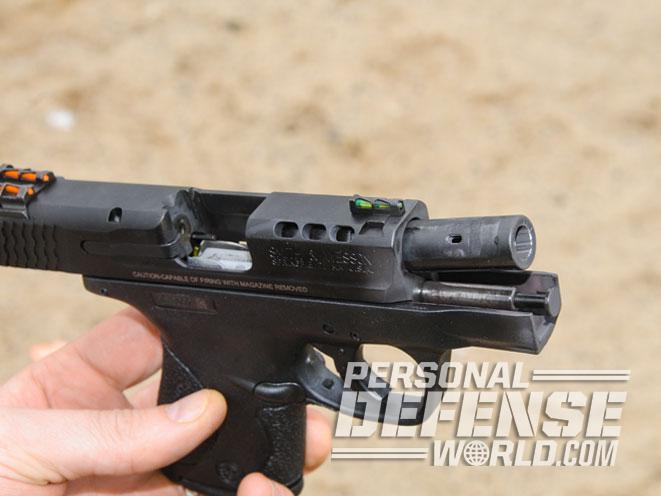
Advertisement — Continue Reading Below
The ports are surprisingly tiny ovals measuring roughly 0.15 inches long by 0.079 inches high. There are two of them—one at two o’clock and one at ten o’clock. They vent hot gases (and particles of unburned powder, copper jacketing, etc.) through a hole in the slide milled for each of them. Those holes measure 0.31 inches long by 0.15 inches tall (preserving the ports’ 2:1 ratio of length to width).
Surprisingly, the Shield’s slide features six ports—three per side—while the barrel features only two. After the projectile has left the barrel and the pressures have dropped to safe levels to extract the shell, the slide moves rearward, exposing the ports around 0.47 inches later. Never do the ports pass under the rear two pairs of slide-relief porting. They serve to vent any errant gas and particles that miss the primary ports, but seemingly their primary function is for aesthetics—to reaffirm that this is the compensated model.
RELATED STORY: Smith & Wesson’s M&P22 Compact Suppressor Pistol
Advertisement — Continue Reading Below
By venting in a V-shape, rather than straight up, this Performance Center variant directs the flash away from your direct line of sight, and also helps stabilize the pistol during its downward push—something like an inverted, instantaneous bipod fighting muzzle climb.
It’s crucial to mind those jets of flame. Don’t shoot from the hip or any other position that puts the ports below or beside you. Don’t shoot underneath indoor lighting, lest the jets break the bulbs. It’s likely that if an attacker grabs your gun and you fire, the ports will have an additional effect for removing their hand from your weapon. It can have this effect on you, too, if you fire it with any body part near those vents, so be mindful.
High Performance
Advertisement — Continue Reading Below
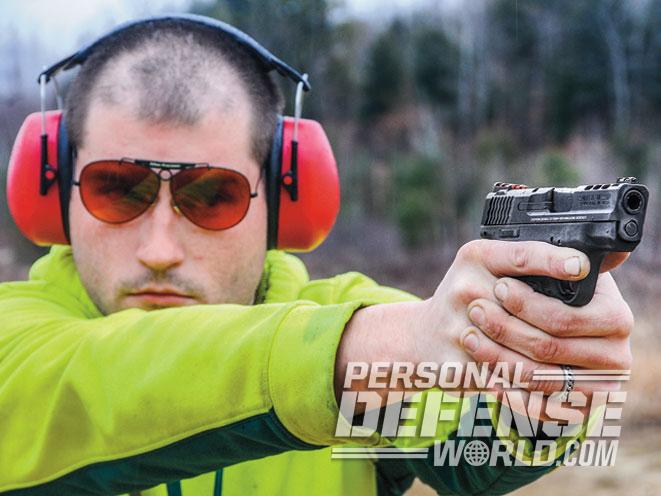
The first accuracy test was a 10-yard rapid-fire “grab and go” test, where I took the gun from the box, loaded it and blasted through a 50-round box of 115-grain ball ammo. Every shot—including the first shot—passed through the 8-inch “down zero” ring of a standard IDPA target. For fun, I put two through the 6-inch-wide head as well. The “sea of brown” effect was in play, where, bereft of a fine, repeated aiming reference, the group size opens up. Once there was a ragged hole to aim for, the rounds just passed through it.
RELATED STORY: Gun Review – Smith & Wesson’s Performance Center 460XVR
Advertisement — Continue Reading Below
S&W certifies that its Shield pistols (which it verifies by firing randomly selected units) can hold 1.7-inch groups at 7 yards, with premium ammunition, fired from a vice. I’m more interested in real-world, unsupported, off-hand accuracy, which is less scientific than a vice, but perhaps more relevant to what you can expect at the range.
The 115-grain Winchester “White Box” and Federal American Eagle rounds felt much snappier than the 147-grain Winchester Defend JHP rounds, as you would expect of the lighter projectiles, with the 124-grain Winchester PDX1 +P rounds being, hands-down, the snappiest of all.
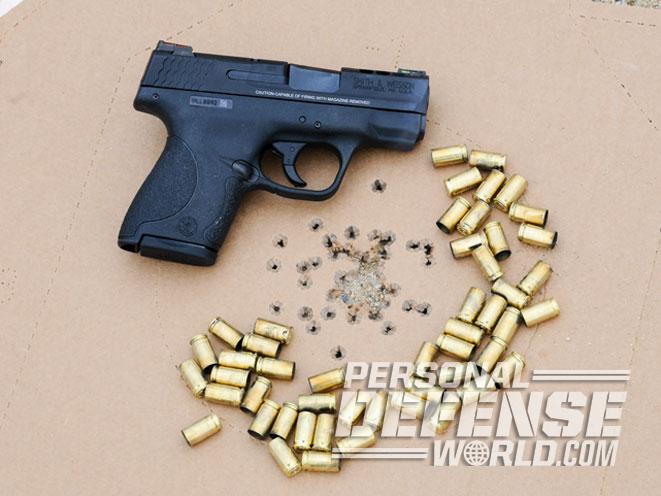
Advertisement — Continue Reading Below
Double-taps, though unmeasured, tended to cluster noticeably more closely than those fired from a non-ported, similar-size subcompact we brought for informal comparison. As these tests were too informal to reveal hard science, we didn’t document them. Anecdotally, however, the second shots did not exhibit as much climb-to-the-right as rapid-fire second shots from subcompacts normally do.
The main concern with jacketed hollow points is their feeding reliability in semi-autos. The Shield had no problems at all chambering any round we fed it—FMJ or JHP—during the course of 600+ rounds fired. One economy-grade FMJ failed to ignite, but it also failed on a second attempt, and on a third attempt in a different gun, so we can’t hold that against the Shield.
RELATED STORY: Smith & Wesson M&P Shield Upgrades
Advertisement — Continue Reading Below
This pocket pistol is built to impress connoisseurs, while adding practical benefit to a pistol that’s already built for extremely reliable, extremely accurate service. It’s not IDPA legal under current rules (even for backup guns), but it’s also designed for defense rather than competing.
Like so many of the higher-end features of customized carry guns, the porting, the improved sear and improved plunger add a certain something to the shooting experience, which is quite subtle (never mind the not-subtle muzzle blast). Though these improvements are not strictly necessary, when considering a tool to save your life, those subtle advantages may be just what you want working in your favor.
For more information, visit http://www.smith-wesson.com or call 800-331-0852.
Advertisement — Continue Reading Below
